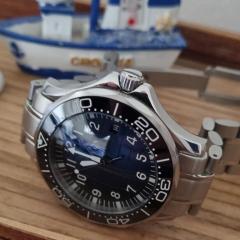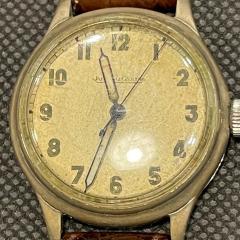-
Similar Content
-
Recently Browsing
- No registered users viewing this page.
-
Topics
-
Posts
-
Following on from my question about identifying screws in the AS2063 movement that basically fell out of the case in bits, I’m pleased to report that I’ve got it all back together, and the movement is running pretty well. But… There’s something wrong with the keyless works and hand setting. It’s fine in winding and quickset date position - these work - but in hand setting position winding the crown turns the whole gear train. I don’t really understand how it’s meant to work. It doesn’t have a traditional friction fit cannon pinion. The second wheel is unusual with a pair of smaller pinions on it, which seem to interact with the barrel and the motion works. Could this be the problem? I must admit I just cleaned it and popped it in place when reassembling the gear train. I’ve lubricated the pivots but didn’t do anything to the extra bits on the second wheel. Does this make sense and is anyone able to figure out what I’m doing wrong? Thanks in advance, as always.
-
You're thinking metal to jewel in general I guess. Maybe it would be a good idea to peg the pallet staff jewel hole on the main plate after the epilame treatment. I think that could work as it is my impression that the epilame doesn't sit very hard, but I could be wrong about that so feel free to educate me. I didn't remember that 9501 was thixotropic (thanks for the link). That would mean it's even runnier during impact (lower viscosity) so perhaps it's time I get some fresh grease as mine seems a bit too runny. What I have seen is a whitish surface after washing but it goes away if I scrub the surface with a brush in a degreaser (Horosolv). I don't think it embeds itself in the metal but sticks very hard to the metal. I don't worry too much about the cleaning solution. I just want perfectly clean parts and my solution can be replaced for little money (ELMA RED 1:9). Anyway, I quite often need "to strip back and rebuild" and scrubbing parts by hand isn't exactly the most stimulating part of a service. Just got confirmation that Moebius 9501 has a lower viscosity (68 at 20° C) than 9504 (305 at 20°). The viscosity of Molykote DX is 285-315 at -25° to +125° C.
-
I’ve had a couple movements where it is clear the previous watchmaker was diligent with lubrication but the old epilam had turned to a fine white powder covering the pallet fork and keyless parts, which can’t be good for parts. I’m spare with epi since I don’t know how long it takes to degrade to that state…
-
By Neverenoughwatches · Posted
I have read some suggestions that it can cause wear , particularly on the fork horns of a fully treated pallet fork. I've had half a kilo of steriac acid powder on a shelf for almost a year now, might have a little play today with a heater and a jar. I think its because it gets into their cleaning solutions Mike. Theirs or anyone else's that services the watch next time, or if they need to strip back and rebuild. Could preclean but thats all time for a pro. I thought the idea was for the epilame to create a barrier, a wall between the lubrication and anything else, so the lube cant spread. -
As I'm only cleaning watches in small numbers at home, I pre-clean any significant deposits of old grease and oil before using the cleaning solutions. I scrape off deposits with pegwood and Rodico, and if really dirty, wash parts in naphtha with a brush. So I'm happy using DX, but can understand why it's avoided by the pros.
-













Recommended Posts